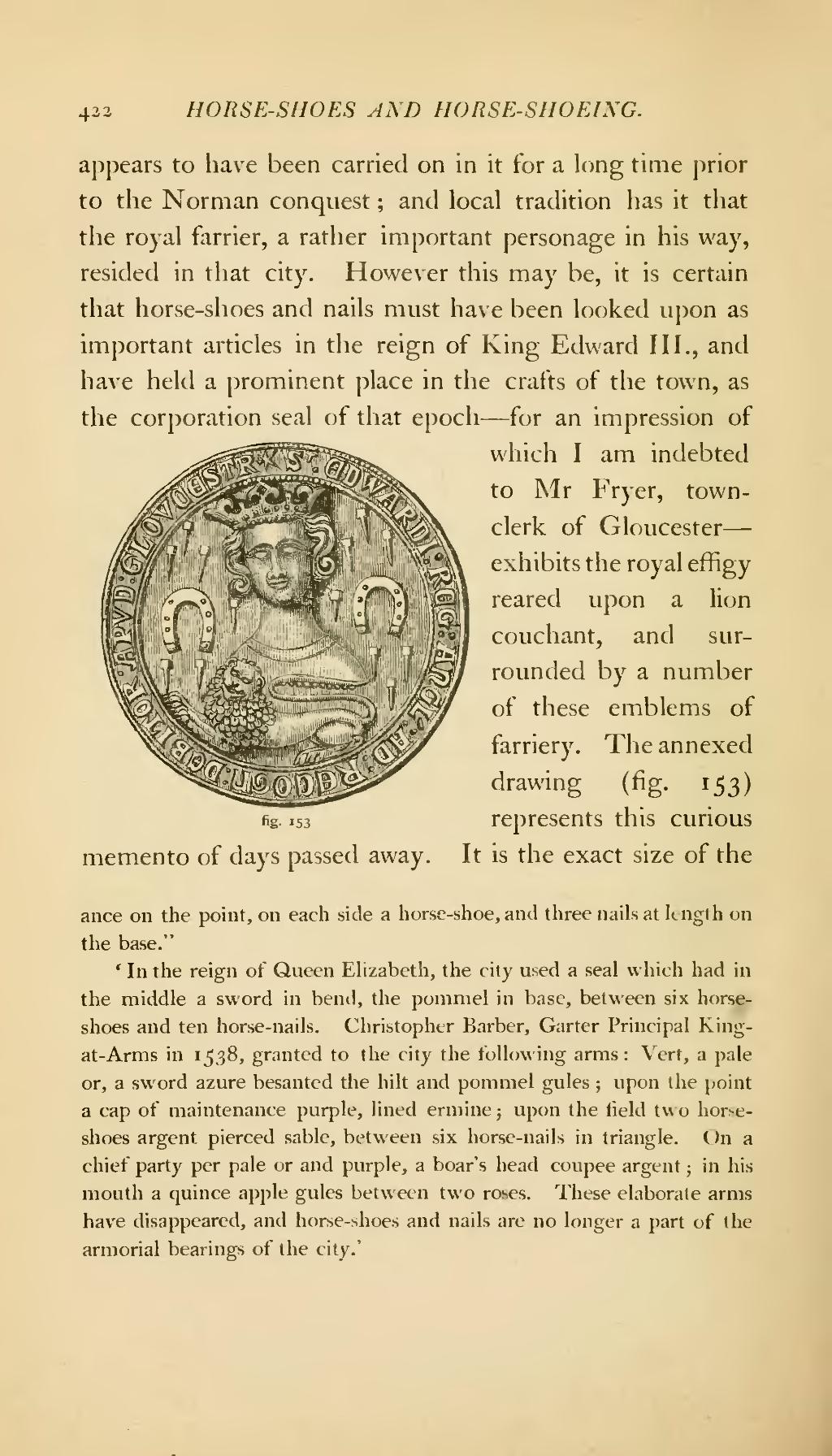appears to have been carried on in it for a long time prior to the Norman conquest; and local tradition has it that the royal farrier, a rather important personage in his way, resided in that city. However this may be, it is certain that horse-shoes and nails must have been looked upon as important articles in the reign of King Edward III., and have held a prominent place in the crafts of the town, as the corporation seal of that epoch—for an impression of which I am indebted to Mr Fryer, town-clerk of Gloucester—exhibits the royal effigy reared upon a lion couchant, and surrounded by a number of these emblems of farriery. The annexed drawing (fig. 153) represents this curious memento of days passed away. It is the exact size of the
ance on the point, on each side a horse-shoe, and three nails at length on the base."
'In the reign of Queen Elizabeth, the city used a seal which had in the middle a sword in bend, the pommel in base, between six horseshoes and ten horse-nails. Christopher Barber, Garter Principal Kingat-Arms in 1538, granted to the city the following arms: Vert, a pale or, a sword azure besanted the hilt and pommel gules; upon the point a cap of maintenance purple, lined ermine; upon the field two horseshoes argent pierced sable, between six horse-nails in triangle. On a chief party per pale or and purple, a boar's head coupee argent; in his mouth a quince apple gules between two roses. These elaborate arms have disappeared, and horse-shoes and nails are no longer a part of the armorial bearings of the city.'

